-
 Bitcoin
Bitcoin $118800
-2.24% -
 Ethereum
Ethereum $4638
-1.08% -
 XRP
XRP $3.117
-5.42% -
 Tether USDt
Tether USDt $1.000
0.03% -
 BNB
BNB $842.6
-1.25% -
 Solana
Solana $195.3
-3.90% -
 USDC
USDC $0.9999
0.02% -
 Dogecoin
Dogecoin $0.2273
-7.27% -
 TRON
TRON $0.3606
0.62% -
 Cardano
Cardano $0.9319
5.60% -
 Chainlink
Chainlink $22.88
-3.66% -
 Hyperliquid
Hyperliquid $45.85
-1.58% -
 Sui
Sui $3.822
-5.16% -
 Stellar
Stellar $0.4276
-6.12% -
 Bitcoin Cash
Bitcoin Cash $594.2
-4.71% -
 Ethena USDe
Ethena USDe $1.000
-0.04% -
 Hedera
Hedera $0.2535
-4.61% -
 Avalanche
Avalanche $24.00
-4.86% -
 Litecoin
Litecoin $123.3
-6.62% -
 Toncoin
Toncoin $3.418
-1.73% -
 UNUS SED LEO
UNUS SED LEO $9.269
0.33% -
 Shiba Inu
Shiba Inu $0.00001307
-5.48% -
 Uniswap
Uniswap $11.04
-9.22% -
 Polkadot
Polkadot $4.047
-5.38% -
 OKB
OKB $101.3
-4.42% -
 Dai
Dai $0.9999
0.01% -
 Bitget Token
Bitget Token $4.612
-4.26% -
 Cronos
Cronos $0.1543
-8.52% -
 Aave
Aave $317.3
-3.42% -
 Ethena
Ethena $0.7275
-8.03%
How to secure my Coinbase Wallet?
Secure your Coinbase Wallet by safeguarding your 12-word recovery phrase—never store it digitally, and keep it offline in a secure, fireproof location.
Aug 13, 2025 at 11:35 am
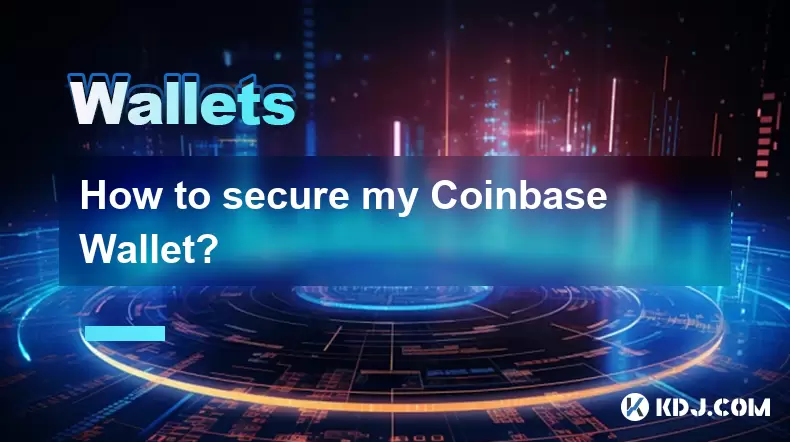
Understanding the Fundamentals of Coinbase Wallet Security
Securing your Coinbase Wallet starts with understanding its non-custodial nature. Unlike the Coinbase exchange, where assets are held on your behalf, the Coinbase Wallet gives you full control over your private keys. This means you are solely responsible for safeguarding your recovery phrase. If your recovery phrase is lost or compromised, there is no way to recover your funds through Coinbase support. The wallet operates independently from your Coinbase.com account, even if you use the same email. It is crucial to recognize that security begins the moment you install the app, and every action afterward impacts the safety of your digital assets.
Setting Up Your Wallet with Maximum Security
When installing the Coinbase Wallet app, only download it from the official app stores—Apple App Store or Google Play Store—to avoid counterfeit versions. After installation, follow these steps carefully:
- Choose "Create a new wallet" instead of importing one unless you already have a recovery phrase.
- Set a strong device passcode or biometric lock (Face ID or fingerprint) to prevent unauthorized access.
- During setup, you will be prompted to write down your 12-word recovery phrase. This is the most critical step.
- Never take a screenshot or store the phrase digitally—use pen and paper only.
- Store the written phrase in a fireproof and waterproof safe, ideally in a secure physical location.
The recovery phrase is the only way to restore your wallet if your device is lost, damaged, or stolen. Treat it like a combination to a vault—anyone with access to it can drain your wallet.
Protecting Your Recovery Phrase from Digital and Physical Threats
The 12-word recovery phrase is the cornerstone of your wallet’s security. Digital storage methods such as cloud backups, notes apps, or photos are extremely risky and can be exploited by malware or hackers. Physical threats include fire, water damage, or theft. To mitigate these:
- Consider using a metal backup solution like a Cryptotag or Billfodl to store your phrase. These are resistant to fire, water, and corrosion.
- Avoid writing the full phrase in one location. You can use shamir backup techniques (if supported) to split the phrase into multiple parts stored in different secure locations.
- Never share the phrase with anyone, including Coinbase support representatives, as they will never ask for it.
- Be cautious of phishing attempts—scammers may pose as Coinbase staff and request your recovery phrase. Remember: legitimate companies will never ask for your private keys or recovery phrase.
Using Two-Factor Authentication and Secure Device Practices
While the Coinbase Wallet app does not support two-factor authentication (2FA) internally, your device-level security plays a vital role. Enable the following on your smartphone:
- Biometric authentication (fingerprint or facial recognition) to lock the app.
- Auto-lock settings that require authentication after a short period of inactivity.
- Find My iPhone (iOS) or Find My Device (Android) to remotely lock or erase your phone if lost.
- Regular OS updates to patch security vulnerabilities.
Avoid rooting or jailbreaking your device, as this bypasses built-in security layers and increases the risk of malware. Also, refrain from using public Wi-Fi when accessing your wallet. If necessary, use a trusted virtual private network (VPN) to encrypt your connection.
Recognizing and Avoiding Phishing and Scam Attempts
Phishing remains one of the top threats to Coinbase Wallet users. Scammers use fake websites, emails, or social media messages to trick you into revealing your recovery phrase or connecting your wallet to malicious sites. To stay protected:
- Always verify URLs before entering any information. The official Coinbase Wallet site is wallet.coinbase.com.
- Never click on links in unsolicited emails or messages claiming to be from Coinbase.
- Beware of fake airdrops or giveaways that require you to connect your wallet or enter your recovery phrase.
- When interacting with decentralized apps (dApps), review transaction details carefully before approving. Malicious dApps may request excessive permissions.
If you accidentally connect your wallet to a suspicious site, disconnect immediately and consider transferring your funds to a new wallet with a fresh recovery phrase.
Managing Connected dApps and Transaction Permissions
When you use your Coinbase Wallet to interact with decentralized applications (dApps), you may grant them certain permissions. Some dApps can retain access to your wallet even after you disconnect. To manage this:
- Open the Coinbase Wallet app and go to the Browser tab.
- Tap the menu icon and select "Connected sites".
- Review the list of dApps with active permissions.
- Disconnect from any unfamiliar or unused sites to revoke their access.
- Regularly audit this list, especially after using new platforms.
For transactions, always double-check the recipient address, token type, and amount before confirming. Once a transaction is sent on the blockchain, it cannot be reversed.
Frequently Asked Questions
Can I recover my Coinbase Wallet if I lose my phone but have the recovery phrase?
Yes. Install the Coinbase Wallet app on a new device, select "Restore wallet", and enter your 12-word recovery phrase exactly as written. Your assets and transaction history will reappear.
Is it safe to store large amounts of cryptocurrency in the Coinbase Wallet app?
For significant holdings, consider using a hardware wallet like Ledger or Trezor. While the Coinbase Wallet app is secure for everyday use, hardware wallets offer stronger protection by keeping private keys offline.
What should I do if someone gains access to my recovery phrase?
Immediately transfer all funds to a newly created wallet with a fresh recovery phrase. Do not reuse the compromised wallet, as the attacker can restore access at any time.
Can I use the same recovery phrase for multiple wallets?
No. Each Coinbase Wallet generates a unique recovery phrase. Reusing a phrase across different wallets increases risk. Always create a new wallet with a new phrase for separate accounts.
Disclaimer:info@kdj.com
The information provided is not trading advice. kdj.com does not assume any responsibility for any investments made based on the information provided in this article. Cryptocurrencies are highly volatile and it is highly recommended that you invest with caution after thorough research!
If you believe that the content used on this website infringes your copyright, please contact us immediately (info@kdj.com) and we will delete it promptly.
- Kazakhstan's Crypto Leap: Bitcoin ETF and Central Asia's Digital Finance Future
- 2025-08-13 12:45:19
- BlockDAG Presale Blazes Past $371M: Fundraising Frenzy Fuels Crypto Sensation
- 2025-08-13 13:05:21
- Meme Coins: Chasing the 2025 Surge – Which Will Moonshot?
- 2025-08-13 10:25:23
- Bitcoin's Wild Ride: Rally, Pullback, and What's Next
- 2025-08-13 10:25:23
- Bitcoin, Bitmax, and Institutional Demand: A New Era of Crypto Investment
- 2025-08-13 10:45:12
- Solana, ROAM, and Airdrops: What's the Buzz in 2025?
- 2025-08-13 11:35:13
Related knowledge
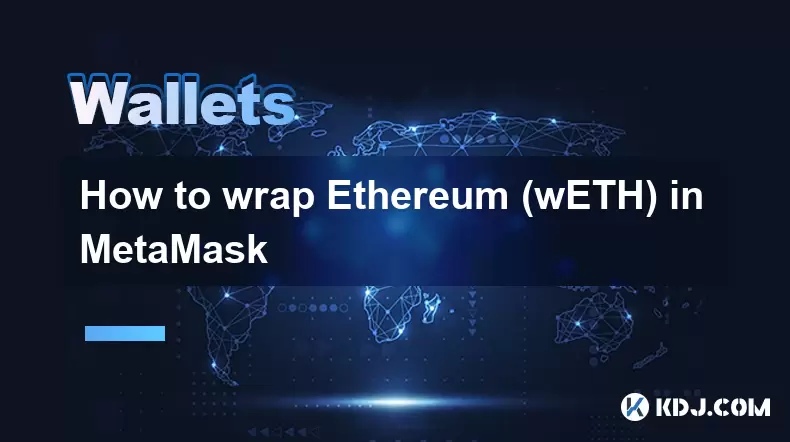
How to wrap Ethereum (wETH) in MetaMask
Aug 13,2025 at 11:36am
Understanding Wrapped Ethereum (wETH)Wrapped Ethereum (wETH) is a tokenized version of native Ethereum (ETH) that conforms to the ERC-20 standard, ena...

How to manage your portfolio in Exodus wallet
Aug 08,2025 at 10:07pm
Understanding the Exodus Wallet InterfaceThe Exodus wallet is a non-custodial cryptocurrency wallet that supports a wide range of digital assets. When...
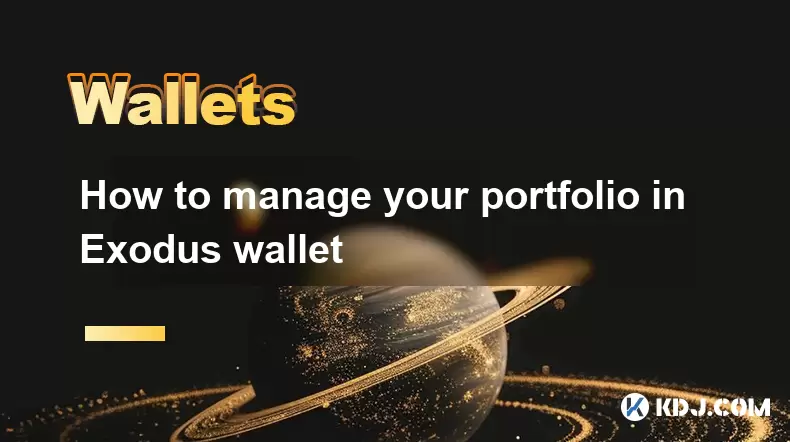
How to manage your portfolio in Exodus wallet
Aug 13,2025 at 11:35am
Understanding the Exodus Wallet InterfaceThe Exodus wallet is a non-custodial cryptocurrency wallet that supports a wide range of digital assets. Upon...

How to reset your MetaMask password
Aug 08,2025 at 01:28pm
Understanding the MetaMask Password Reset ProcessMany users confuse the MetaMask password with the seed phrase or private key, but they serve differen...
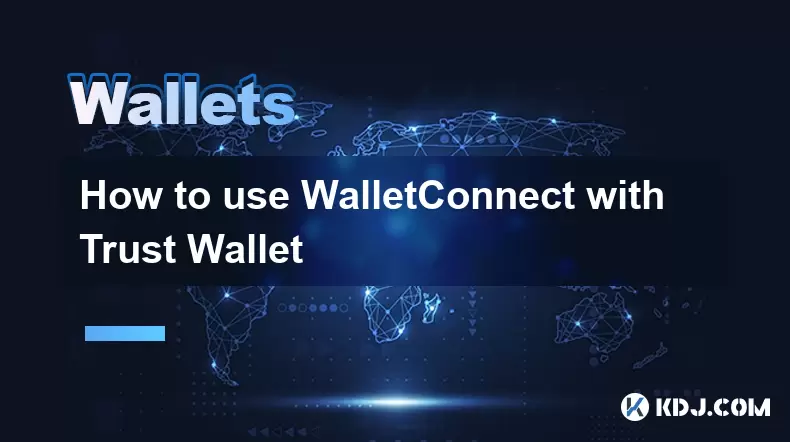
How to use WalletConnect with Trust Wallet
Aug 13,2025 at 01:07am
What Is WalletConnect and Why It Matters for Trust Wallet UsersWalletConnect is an open-source protocol that enables secure communication between dece...
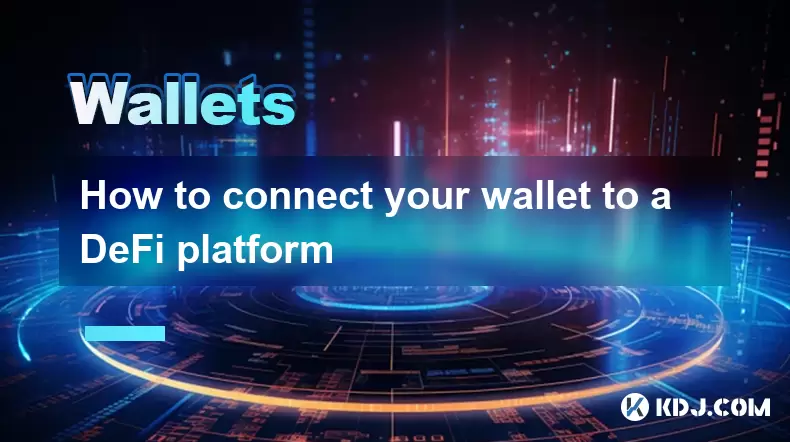
How to connect your wallet to a DeFi platform
Aug 13,2025 at 11:36am
Understanding Wallet Compatibility with DeFi PlatformsBefore connecting your wallet to any DeFi platform, it's essential to ensure your wallet is comp...

How to wrap Ethereum (wETH) in MetaMask
Aug 13,2025 at 11:36am
Understanding Wrapped Ethereum (wETH)Wrapped Ethereum (wETH) is a tokenized version of native Ethereum (ETH) that conforms to the ERC-20 standard, ena...

How to manage your portfolio in Exodus wallet
Aug 08,2025 at 10:07pm
Understanding the Exodus Wallet InterfaceThe Exodus wallet is a non-custodial cryptocurrency wallet that supports a wide range of digital assets. When...

How to manage your portfolio in Exodus wallet
Aug 13,2025 at 11:35am
Understanding the Exodus Wallet InterfaceThe Exodus wallet is a non-custodial cryptocurrency wallet that supports a wide range of digital assets. Upon...

How to reset your MetaMask password
Aug 08,2025 at 01:28pm
Understanding the MetaMask Password Reset ProcessMany users confuse the MetaMask password with the seed phrase or private key, but they serve differen...

How to use WalletConnect with Trust Wallet
Aug 13,2025 at 01:07am
What Is WalletConnect and Why It Matters for Trust Wallet UsersWalletConnect is an open-source protocol that enables secure communication between dece...

How to connect your wallet to a DeFi platform
Aug 13,2025 at 11:36am
Understanding Wallet Compatibility with DeFi PlatformsBefore connecting your wallet to any DeFi platform, it's essential to ensure your wallet is comp...
See all articles

























































































